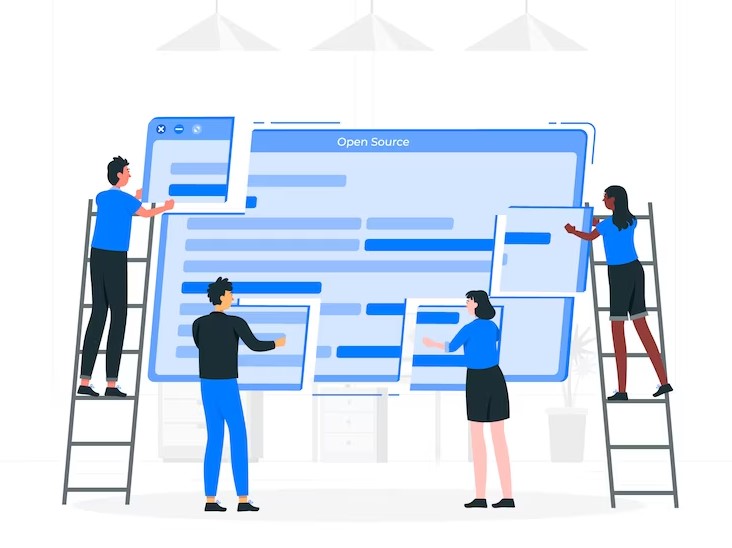
No-Code Development: What is it and what benefits does it offer?
March 28, 2022
Table of contents
Quick Access

No-code development refers to the creation of computer applications without the need to write code. This is accomplished by using tools and platforms that allow users to build applications using graphical interfaces and visual tools instead of having to code manually.
It has become popular in recent years due to its ease of use and accessibility. No-code tools allow people without programming experience, such as entrepreneurs, designers and other professionals, to create custom applications for their businesses and projects without having to hire a software development team.
No-code tools also allow software developers to build prototypes and applications faster than if they had to write all the code manually. This is because they can use pre-built and visual tools to speed up the development process.

Aspects that characterize No-Code development
- No-code development uses tools with a graphical user interface (GUI) to allow users to create applications without writing code.
- No-code tools come with pre-built components that can be dragged and dropped to build applications. These components include buttons, data entry fields, dropdown menus, among others.
- No-code tools also enable process automation, which means users can create automated workflows without the need for coding.
- Integrations can be made with other applications and services, such as databases, email, social networks and other productivity tools.
- No-code tools also enable collaboration between development teams, meaning multiple people can work together on an app without having to worry about coding.

Benefits of No-Code software development
Speed
One of the main attractions of No-Code software development is the speed with which users can create immediate prototypes of platforms that customers are demanding. Those who use Low-Code or No-Code can launch 68% of their products in 4 months, while those who do not use it manage to deliver 57% of their products in the same period of time, according to a study carried out by experts from the University of Toronto.
Maintainability
According to this same study from the University of Toronto, a large part of the companies' budget is consumed by platform and application maintenance projects, allocating little budget for innovation.
“Organizations that use Low/No-Code development could have more innovation projects instead of maintenance, compared to those that do not use it”, the researchers indicated.
“Low-Code platforms provide a single, centralized environment for all aspects of application management, reducing the complexity and difficulty of application maintenance as critical software maintenance players can collaborate on the same platform efficiently”, they added.

Flexibility
No-code tools allow users to make changes to applications quickly and easily, allowing them to adapt to the changing needs of their business.
Increased focus on problem solving
No-code development allows users to focus on solving problems and creating solutions instead of worrying about programming and coding.
Rapid prototyping
No-code tools are ideal for rapid prototyping, which means that developers can quickly and effectively create and test software solutions.
Limitations of No-Code development
While No-code development may seem like a quick and convenient solution for companies looking to build custom applications or tools without having to hire a team of programmers, it can also significantly limit your ability to create truly innovative and scalable solutions.
By relying exclusively on No-code platforms, companies can get locked into a limited set of design and functionality options, which can make it difficult to differentiate their products or services. In addition, No-code platforms may have limitations in the ability to integrate with other business systems and processes, which can limit a company's ability to automate and optimize its operations.

- Functionality limitations
No-code platforms can be very limited in terms of the functionality they offer, which may mean that the resulting application or tool is not capable of satisfying all the needs of the company.
“Drag and drop elements have the advantage that they are already provided and you can easily click on your elements to join them together. On the other hand, you are limited to those fixed elements. So it's restricted to customizing your app on no-code platforms and doesn't give you all the power and flexibility you might need. It may mean redesigning the flows in your application to comply with the capabilities of the platform without code”, they explained in an article on the Fintory portal.
- Lack of customization
Although no-code platforms can be very easy to use, they do not offer the same flexibility as custom development, which means that the company may find it difficult to tailor the application to its specific needs.
- Third party dependency
By using a No-code platform, the company is heavily dependent on third-party technology providers, which can result in the company having to wait for these providers to fix issues or update their platforms.
- Integration limitations
Applications and tools developed using No-code may have difficulty integrating with other business systems, which can make it difficult to automate and optimize business processes.
“Poor application performance and resource usage is a common complaint about low code. The performance of low-code applications is almost always noticeably poorer than software developed in a true programming language", they explained in a TechTarget article.

- Limited scalability
Applications and tools developed using No-code may find it difficult to scale as the business grows, which can quickly make the solution obsolete.
In conclusion, No-code development can be a useful tool for companies looking to create custom applications and tools without the need for specialized programming knowledge. However, it's also important to consider its limitations, such as a lack of customization and a reliance on third-party technology providers.
Also, while No-code development can be a quick and convenient solution, it is not always the best option in the long run, as it can limit the company's ability to differentiate itself from its competitors and adapt to changes in the market.
Therefore, before deciding to use No-code development, it is important to carefully assess the needs of the company and consider whether it is the best option to achieve its long-term goals.
Do you need an expert software development team? At Rootstack, we have +10 years of experience supporting companies in their digital transformation. Contact us!
We recommend this video
Related Blogs
-6.45.03-p.m.png)
Migrating to Oracle Cloud: Strategies and Considerations
-9.01.17-a.m.png)
Nearshore development helps midsize companies grow
-9.01.17-a.m.png)
Methodologies used by IT staff augmentation companies
-9.01.17-a.m.png)
Hire a software development team in Colombia
-2.10.50-p.m.png)
What you gain by hiring a software provider in Panama
-3.57.25-p.m.png)